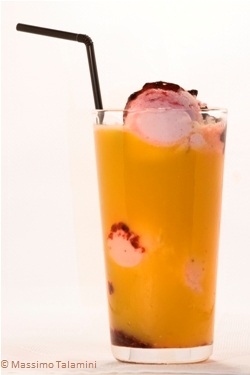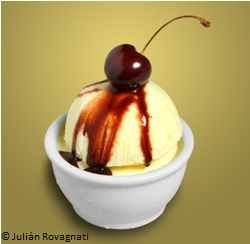How Ice Cream is Made
Everybody has a favourite flavour or brand of ice cream, and the debate over whose ice cream is the best rages on each year. While each manufacturer develops its own special recipes, ice cream production basics are basically the same everywhere.
The most important ice cream ingredients come from milk. The dairy ingredients are crucial in determining the characteristics of the final frozen product. 
Ice cream contains non-fat solids (the non-fat, protein part of the milk) which contribute nutritional value (protein, calcium, minerals and vitamins). Non-fat dry milk, skim milk and whole milk are the usual sources of non-fat solids.
The sweeteners used in ice cream vary from cane or beet sugar to corn sweeteners or honey. Stabilizers, such as plant derivatives, are commonly used in small amounts to prevent the formation of large ice crystals and to make a smoother ice cream.
Emulsifiers, such as lecithin and mono- and diglycerides, are also used in small amounts. They provide uniform whipping qualities to the ice cream during freezing, as well as a smoother and drier body and texture in the frozen form.
These basic ingredients are agitated and blended in a mixing tank. The mixture is then pumped into a pasteurizer, where it is heated and held at a predetermined temperature. The hot mixture is then 'shot' through a homogenizer, where pressure of 2,000 to 2,500 pounds per square inch breaks the milk fat down into smaller particles, allowing the mixture to stay smooth and creamy.
The mix is then quick-cooled to about 40°F and frozen via the "continuous freezer" method (the "batch freezer" method) that uses a steady flow of mix that freezes a set quantity of ice cream one batch at a time. During freezing the mix is aerated by 'dashers,' revolving blades in the freezer. The small air cells that are incorporated by this whipping action prevent ice cream from becoming a solid mass of frozen ingredients.
The amount of aeration is called 'overrun' and is limited by the federal standard that requires the finished product must not weigh less than 4.5 pounds per gallon.
The next step is the addition of bulky flavourings, such as fruits, nuts and chocolate chips. The ingredients are either 'dropped' or 'shot' into the semi-solid ice cream after it leaves the freezer.
After the flavouring additions are completed the ice cream can be packaged in a variety of containers, cups or moulds. It is moved quickly to a 'hardening room' where sub-zero temperatures freeze the product to its final state for storage and distribution.
For more facts and information on Dairy and Ice-cream visit the International Dairy Foods Association www.idfa.org